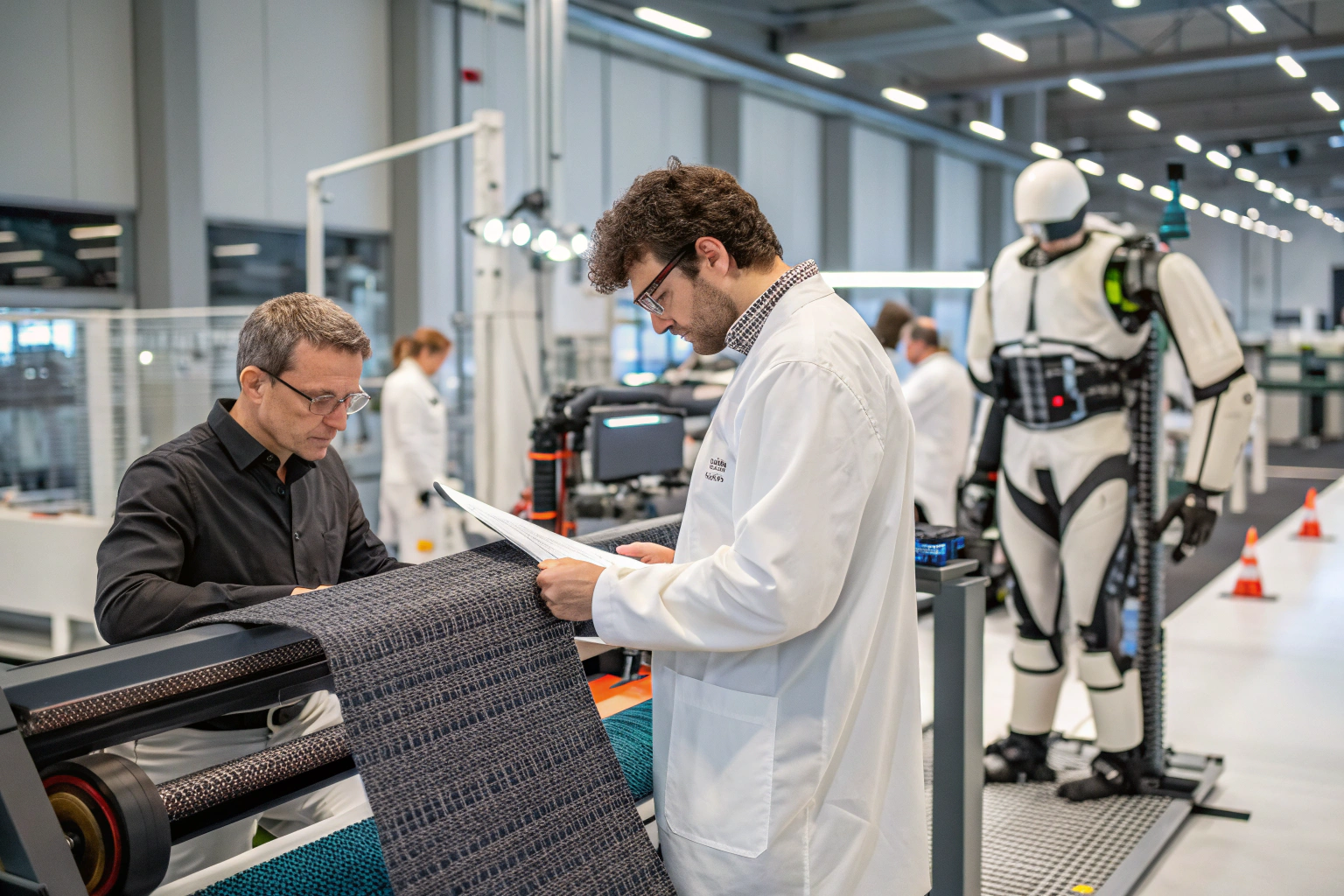In the fast-growing field of wearable robotics, fabric selection plays a crucial role in exoskeleton performance, comfort, and durability. Choosing the wrong material can lead to restricted mobility, overheating, or premature wear. Selecting the right fabric ensures the device moves with the human body while protecting its mechanical components.
The best fabrics for exoskeleton integration are those that balance strength, flexibility, and breathability, such as advanced technical textiles, high-performance synthetics, and sustainable fiber blends. These materials allow for comfort, durability, and optimal mechanical performance.
As someone in the fabric manufacturing and export industry for over two decades, I’ve seen how the right textile can make or break an innovative wearable tech project. Let’s explore the fabrics most suitable for exoskeleton technology and why they’re the future of functional apparel.
High-Performance Technical Textiles
Technical textiles are the backbone of wearable robotics because they offer a combination of durability and adaptability that standard fabrics cannot match.
For exoskeletons, high-performance fabrics like aramid fibers, ripstop nylon, and laminated membranes provide abrasion resistance, tear strength, and weatherproofing—all without adding excessive weight.
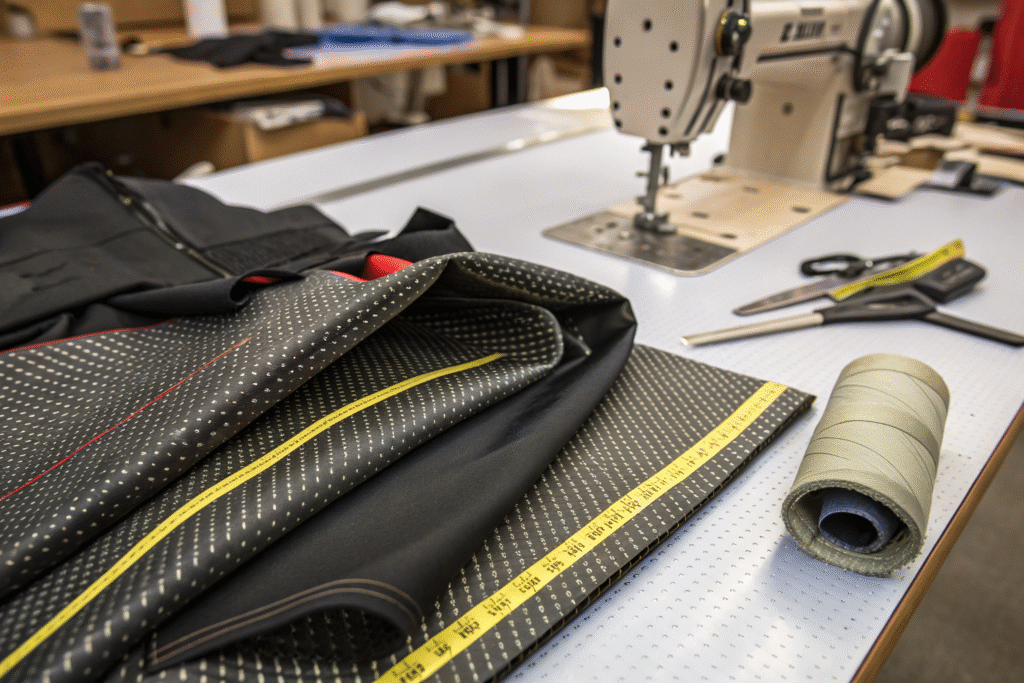
When designing exoskeleton garments, engineers often seek fabrics that can withstand repeated flexing without losing structural integrity. Aramid fibers such as Kevlar are renowned for their high tensile strength, making them ideal for protective outer layers. Ripstop nylon is another staple, with its grid reinforcement preventing small tears from spreading. Laminated membranes like Gore-Tex add waterproofing while remaining breathable.
How Do Aramid Fabrics Improve Safety?
Aramid fabrics offer exceptional resistance to heat and abrasion. This makes them suitable for industrial exoskeletons used in high-risk environments. The dense weave structure provides consistent protection even after extended wear, reducing downtime for repairs and replacements.
Why Is Ripstop Nylon Ideal for Flex Zones?
Ripstop nylon combines lightness with durability, making it perfect for sections of the exoskeleton that require frequent bending. Its reinforced grid pattern ensures that wear and tear remain localized, prolonging the garment’s usable life.
Stretch and Mobility Fabrics
Stretch fabrics allow an exoskeleton to move naturally with the body, which is essential for user comfort and functional efficiency.
Fabrics like spandex, elastane, and advanced knit composites enhance range of motion while maintaining a close fit to the mechanical frame.
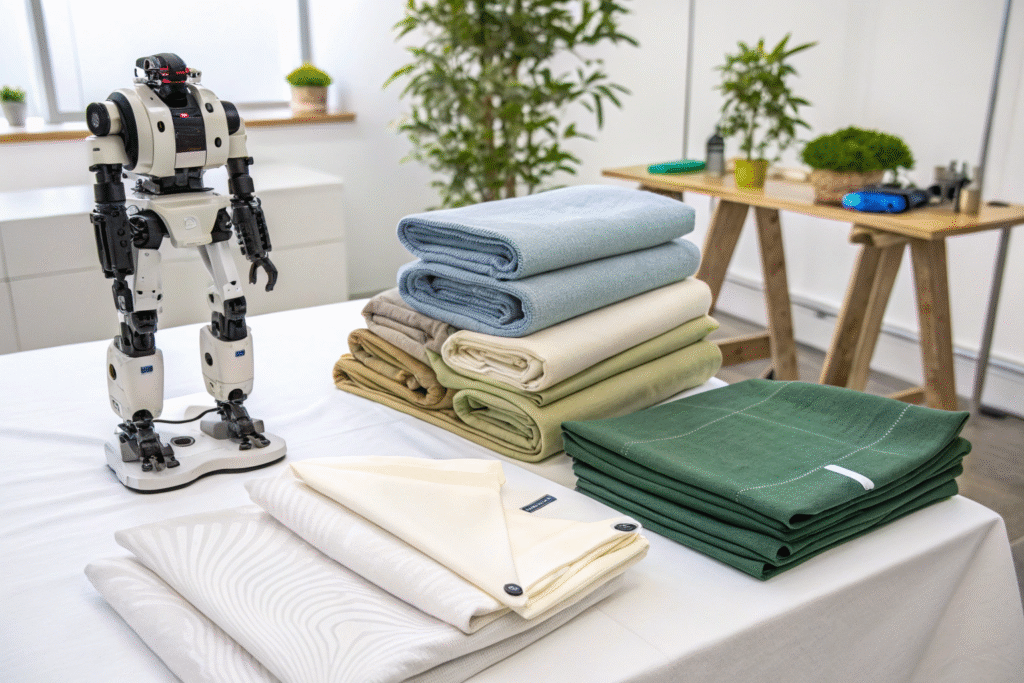
Knitted textiles such as warp knits and double knits provide multidirectional elasticity, reducing restriction during complex movements. This is especially important in rehabilitation exoskeletons where patients require freedom of movement to regain muscle strength. Leading sportswear technologies, like Lycra, have already proven their value in high-performance athletic gear and are now making their way into robotics applications.
How Does Spandex Enhance Comfort in Wearable Robotics?
Spandex delivers up to 600% stretch before breaking, enabling tight yet flexible fits that adapt to body contours. This reduces chafing and pressure points during prolonged use, critical for military and medical exoskeleton users.
What Role Do Knitted Composites Play in Exoskeletons?
Knitted composites blend stretch yarns with technical fibers for both flexibility and strength. These hybrid fabrics ensure that even as the garment stretches, it retains enough stability to support mechanical load transfer.
Lightweight Breathable Fabrics
Breathability is crucial for thermal regulation, especially when an exoskeleton is worn for hours in warm environments.
Lightweight breathable fabrics such as polyester mesh, moisture-wicking knits, and micro-perforated laminates keep the user cool and dry while protecting electronics from sweat exposure.
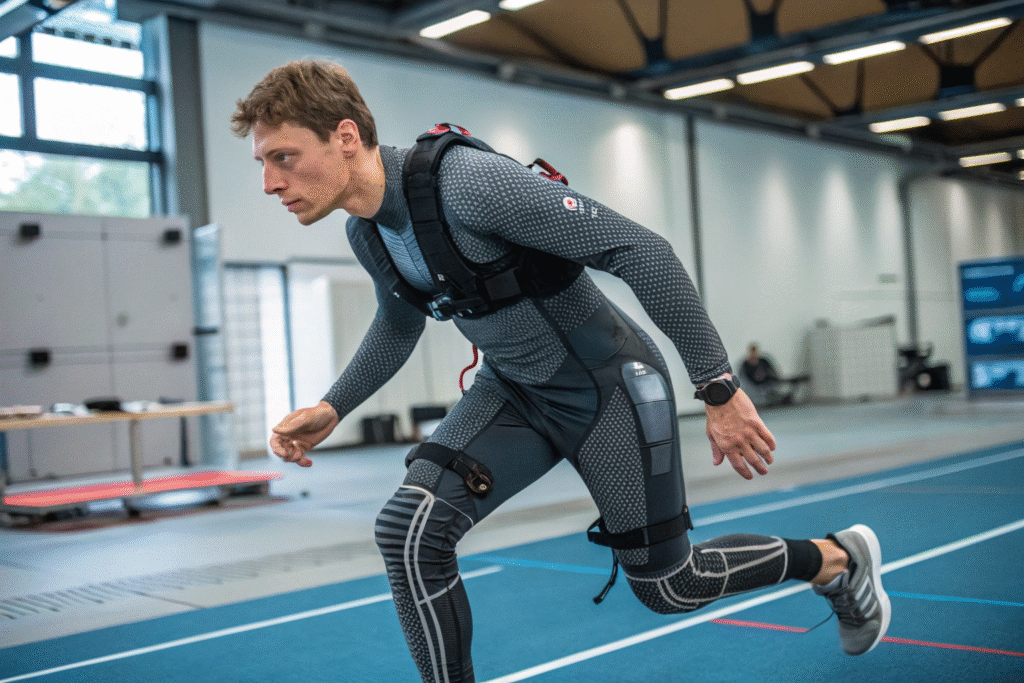
Performance meshes are widely used in sports gear for their ability to allow air circulation without sacrificing durability. Moisture-wicking fabrics, like those developed by Polartec, actively transport sweat away from the skin to speed up evaporation. In exoskeleton applications, breathable sections are often placed near high-sweat zones such as the back, underarms, and knees.
Why Is Moisture-Wicking Fabric Important in Robotics?
Moisture-wicking fabrics prevent sweat buildup, which can cause discomfort and even damage sensitive electronics. They also improve hygiene, making them ideal for shared-use exoskeletons in industrial settings.
How Do Mesh Panels Improve Heat Management?
Mesh panels placed in targeted zones increase ventilation without compromising mechanical support. They also reduce the overall weight of the exoskeleton garment, enhancing user endurance.
Sustainable and Eco-Friendly Fabrics
Sustainability is becoming a priority in every industry, including wearable robotics.
Eco-friendly fabrics such as recycled polyester, organic cotton, and bamboo-based textiles offer a reduced environmental footprint while delivering performance characteristics needed for exoskeleton integration.
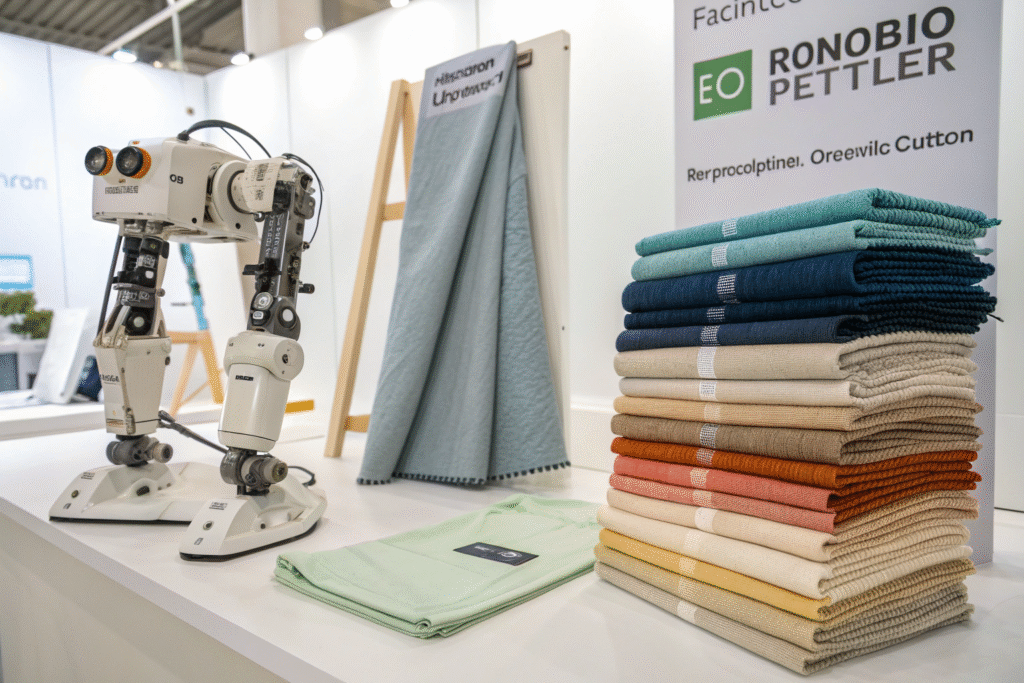
Recycled polyester, sourced from post-consumer plastic bottles, matches the durability of virgin fibers while reducing waste. Organic cotton provides softness for inner linings and non-abrasive contact points. Bamboo fabrics offer natural antibacterial properties and superior moisture absorption, making them ideal for skin-contact areas in long-term use exoskeletons.
Can Recycled Fabrics Match Technical Performance?
Modern recycled fibers undergo advanced processing to achieve strength and consistency equal to conventional textiles. Companies like Unifi’s Repreve have set high industry standards, making recycled materials a viable choice for high-performance applications.
Why Consider Bamboo in Wearable Robotics?
Bamboo fabrics are hypoallergenic, breathable, and naturally resistant to odor-causing bacteria. These qualities make them ideal for users wearing exoskeletons for extended periods in varying climates.
Conclusion
Selecting the best fabrics for exoskeleton integration is not only about performance but also about user comfort, safety, and environmental responsibility. From high-performance aramids to sustainable bamboo blends, each material serves a specific purpose in the complex design of wearable robotics.
If you are developing an exoskeleton product and want access to premium fabrics designed for advanced applications, Shanghai Fumao can help. Contact our Business Director Elaine at elaine@fumaoclothing.com to discuss your project and explore our extensive textile solutions.

